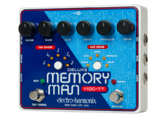Where to buy Deluxe Memory Man 1100-TT?
Less
There are no classified ads for this product.
Tech. sheet
- Manufacturer: Electro-Harmonix
- Model: Deluxe Memory Man 1100-TT
- Series: Memory
- Category: Delays/Echos/Phrase Samplers for Guitar
- Other names:deluxememoryman 1100 tt, deluxememoryman1100tt, deluxememoryman1100 tt, deluxe memory man1100 tt, deluxe memory man 1100tt, Deluxe Memory Man w/Tap Tempo, Deluxe Memory Man Tap Tempo
We have no technical specifications for this product
but your help will be much welcomed
»
News
Videos
User reviews
4.3/5(3 reviews)
5
67 %
4
3
33 %
2
1
Excellent "Do it all" Delay
Published on 08/09/11 at 13:10This is a brilliant update of the Deluxe Memory Man franchise that EH has been building off and on since the late 70s. Characteristically the DMM pedals have had a clean, musical distortion with excellent modulation. This pedal adds a digital control section which allows tap tempo, an external effects loop and external control of a number of parameters (more later). Unfortunately, the device requires 4 MN3005 chips from Panasonic (these are the delay chips with the longest delay ever available, allowing very clear and high quality repeats without clock noise or excessive loss of high end). EH has said that they've discovered 75% of their MN3005s were fake, actually 3008s with 1/2 the...…
Read more
This is a brilliant update of the Deluxe Memory Man franchise that EH has been building off and on since the late 70s. Characteristically the DMM pedals have had a clean, musical distortion with excellent modulation. This pedal adds a digital control section which allows tap tempo, an external effects loop and external control of a number of parameters (more later). Unfortunately, the device requires 4 MN3005 chips from Panasonic (these are the delay chips with the longest delay ever available, allowing very clear and high quality repeats without clock noise or excessive loss of high end). EH has said that they've discovered 75% of their MN3005s were fake, actually 3008s with 1/2 the delay time, so they've built something on the order of 300, and when they're gone they'll be reissued in a 650 mSec version (the original DMMTT is up to 1.5 seconds with tap).
UTILIZATION
Basic use is simple-set the delay with the knob or the tap tempo, set the level of the delay compared to the input signal, and the feedback knob for the number of repeats. Additional controls include a gain knob that drives the overall level of the pedal (both delayed and clean sounds), a modulation knob which uses a sine wave on one side and a square wave on the other. You can use this to subtly change the pitch of the repeats to emulate tape delay. You can also use it for radical pitch shifting, subtle to seasick flange/chorus, and other over the top effects. The tap tempo can be adjusted to various divisions so that playing at the base rate (quarter notes) can result in 1/8th note arpeggios or triplets. This is not practically footswitchable (the button to choose divisions is small and flat to the surface), but there is an easy mod where you can use an external tap pedal to step thru the division, or to step thru the expression pedal targets. The expression pedal can replace the function of any of the knobs, allowing smooth control over anything you might want a knob for... The EP jack uses 0-5v on the ring, with the signal thru the tip, so the pedal can be integrated with a Moog system if you use the CP251 controller to attenuate the Moog voltage from 10v to 5v. The effects loop affects only the delayed sound, so you can EQ, pitch shift, delay, mangle the delay only for many weird and wonderful effects.
SOUND QUALITY
The delays are fairly clear, with gradual loss of high and low end as the repeats go on. This means that playing along with the the delayed sound, even with high levels of feedback, allows the notes you're currently playing to shine thru. Some delays gradually morph into a click as the delays go on (like the Memory Lane), this one retains some of the tone of the note, more like the old DM2. It plays well with distortion and has a decent amount overhead for loud inputs.
OVERALL OPINION
I've owned or played more than 50 delays by this time, from an original EP2 and the Sireco Oilcans to the most modern digital rackmounts, and this thing is in my top 5. It's got a ton of control, can be integrated into bigger more complex systems, and has a basic excellent delay sound. Definitely a keeper. Now for the bad news, with 300 units on the market, get searching NOW because when they're gone they're never coming back. Diamond has discontinued it's delay due to the absence of available MN3005 chips, there just aren't enough for EH to go back into the DMMTT business, and you won't be able to build your own due to the digital complexity.
UTILIZATION
Basic use is simple-set the delay with the knob or the tap tempo, set the level of the delay compared to the input signal, and the feedback knob for the number of repeats. Additional controls include a gain knob that drives the overall level of the pedal (both delayed and clean sounds), a modulation knob which uses a sine wave on one side and a square wave on the other. You can use this to subtly change the pitch of the repeats to emulate tape delay. You can also use it for radical pitch shifting, subtle to seasick flange/chorus, and other over the top effects. The tap tempo can be adjusted to various divisions so that playing at the base rate (quarter notes) can result in 1/8th note arpeggios or triplets. This is not practically footswitchable (the button to choose divisions is small and flat to the surface), but there is an easy mod where you can use an external tap pedal to step thru the division, or to step thru the expression pedal targets. The expression pedal can replace the function of any of the knobs, allowing smooth control over anything you might want a knob for... The EP jack uses 0-5v on the ring, with the signal thru the tip, so the pedal can be integrated with a Moog system if you use the CP251 controller to attenuate the Moog voltage from 10v to 5v. The effects loop affects only the delayed sound, so you can EQ, pitch shift, delay, mangle the delay only for many weird and wonderful effects.
SOUND QUALITY
The delays are fairly clear, with gradual loss of high and low end as the repeats go on. This means that playing along with the the delayed sound, even with high levels of feedback, allows the notes you're currently playing to shine thru. Some delays gradually morph into a click as the delays go on (like the Memory Lane), this one retains some of the tone of the note, more like the old DM2. It plays well with distortion and has a decent amount overhead for loud inputs.
OVERALL OPINION
I've owned or played more than 50 delays by this time, from an original EP2 and the Sireco Oilcans to the most modern digital rackmounts, and this thing is in my top 5. It's got a ton of control, can be integrated into bigger more complex systems, and has a basic excellent delay sound. Definitely a keeper. Now for the bad news, with 300 units on the market, get searching NOW because when they're gone they're never coming back. Diamond has discontinued it's delay due to the absence of available MN3005 chips, there just aren't enough for EH to go back into the DMMTT business, and you won't be able to build your own due to the digital complexity.
See less
10
»
It is not up to the name it bears.
Published on 10/14/13 at 09:15 (This content has been automatically translated from French)Analog delay pedal with tap tempo. The build quality is quite good, although from experience I'm a bit wary of the footswitch pedals "XO" (New Generation) EHX.
UTILIZATION
Using extremely simple, you just take a few minutes to understand the interaction between the buttons.
Interesting point when using the tap tempo, you can also use the subdivision notes, and thus arrive at a closer to a reverb effect 'as a delay, and it is very simple and instinctive way.
SOUND QUALITY
This is a good delay. In fact, in the current production of analog delays, it may be the best that I have ever trying.
However, it is singularly lacking in character. It is very quiet, very clean, but it...…
UTILIZATION
Using extremely simple, you just take a few minutes to understand the interaction between the buttons.
Interesting point when using the tap tempo, you can also use the subdivision notes, and thus arrive at a closer to a reverb effect 'as a delay, and it is very simple and instinctive way.
SOUND QUALITY
This is a good delay. In fact, in the current production of analog delays, it may be the best that I have ever trying.
However, it is singularly lacking in character. It is very quiet, very clean, but it...…
Read more
Analog delay pedal with tap tempo. The build quality is quite good, although from experience I'm a bit wary of the footswitch pedals "XO" (New Generation) EHX.
UTILIZATION
Using extremely simple, you just take a few minutes to understand the interaction between the buttons.
Interesting point when using the tap tempo, you can also use the subdivision notes, and thus arrive at a closer to a reverb effect 'as a delay, and it is very simple and instinctive way.
SOUND QUALITY
This is a good delay. In fact, in the current production of analog delays, it may be the best that I have ever trying.
However, it is singularly lacking in character. It is very quiet, very clean, but it almost look like a digital delay. Also, it does not compare against a deluxe memory man "big box": it has an extra grain that are not found here, too bad. Similarly, we have no damage on DMMtt a beautiful tremolo, as with older DMM. The modulation is nice, even very good, but again below what we had used EHX.
OVERALL OPINION
I had a good month, at a good price. However he quickly bored me, and I returned to the DMM "big box" which is much more interesting.
I bought it to replace my Strymon Timeline, and finally I came to regret it when I do not particularly like digital delays.
I was talking about the current production of analog delays. It would be interesting to see what the delay gives Moog released in November for 200 €, because I do not put that kind of money in this model!
But be careful: I love analog delays, and some may appreciate, however, that DMMtt is so clean, quiet and smooth. Tastes and colors, it can not be discussed
UTILIZATION
Using extremely simple, you just take a few minutes to understand the interaction between the buttons.
Interesting point when using the tap tempo, you can also use the subdivision notes, and thus arrive at a closer to a reverb effect 'as a delay, and it is very simple and instinctive way.
SOUND QUALITY
This is a good delay. In fact, in the current production of analog delays, it may be the best that I have ever trying.
However, it is singularly lacking in character. It is very quiet, very clean, but it almost look like a digital delay. Also, it does not compare against a deluxe memory man "big box": it has an extra grain that are not found here, too bad. Similarly, we have no damage on DMMtt a beautiful tremolo, as with older DMM. The modulation is nice, even very good, but again below what we had used EHX.
OVERALL OPINION
I had a good month, at a good price. However he quickly bored me, and I returned to the DMM "big box" which is much more interesting.
I bought it to replace my Strymon Timeline, and finally I came to regret it when I do not particularly like digital delays.
I was talking about the current production of analog delays. It would be interesting to see what the delay gives Moog released in November for 200 €, because I do not put that kind of money in this model!
But be careful: I love analog delays, and some may appreciate, however, that DMMtt is so clean, quiet and smooth. Tastes and colors, it can not be discussed
See less
90
»
Excellent analog delay, as in live experiments
Published on 05/05/12 at 08:08 (This content has been automatically translated from French)This is a delay-type "Bucket Brigade", or "BBD". The technology involves the use of BBD chip, the signal passes capacitor (capacitor? ... TBC) in capacitor, resulting in a delay and degradation. It also makes the chorus, flanger and tremolo effects since these are also based on delay lines.
The signal path is purely analog, only the control is digital-clock, assigning the expression pedal etc..
Level connectivity, the DMMTT offers:
- A classic in-out torque
- A send-return torque to insert external treatments in the feedback loop
- An input for an expression pedal
- An input for a footswitch
- A classic 9V center negative for food.
Level control, six pots litter the...…
The signal path is purely analog, only the control is digital-clock, assigning the expression pedal etc..
Level connectivity, the DMMTT offers:
- A classic in-out torque
- A send-return torque to insert external treatments in the feedback loop
- An input for an expression pedal
- An input for a footswitch
- A classic 9V center negative for food.
Level control, six pots litter the...…
Read more
This is a delay-type "Bucket Brigade", or "BBD". The technology involves the use of BBD chip, the signal passes capacitor (capacitor? ... TBC) in capacitor, resulting in a delay and degradation. It also makes the chorus, flanger and tremolo effects since these are also based on delay lines.
The signal path is purely analog, only the control is digital-clock, assigning the expression pedal etc..
Level connectivity, the DMMTT offers:
- A classic in-out torque
- A send-return torque to insert external treatments in the feedback loop
- An input for an expression pedal
- An input for a footswitch
- A classic 9V center negative for food.
Level control, six pots litter the panel:
- Blend to balance 100% 100% dry and wet
- Gain to modulate the input signal level of -13 to +20 dB
- Rate for modulating the speed of the modulation of the delay time
- Depth to modulate the depth of modulation of delay time (the LFO is triangular)
- For sending feedback loop in the internal or external
- Delay to set the delay time from 52 to 1100 ms.
There are also two buttons to adjust:
- The subdivision of the beat came in tap tempo if necessary
- The parameters to be controlled by the pedal
And finally, two switches:
- Bypass
- Tap tempo
No preset store, and saw no need for simplicity and efficiency of boiboite.
It may be noted that his little brother 550TT DMM differs from him only by the fact that he does not have two but one chip, thus dividing the delay time by two.
UTILIZATION
Everything is very simple, editing is easy.
The tap tempo makes things really simple live, and this is a very flexible pedal.
The entry of the pedal receives the 0-5V, which means that the DMMTT can be used in a system of modular synth.
In good BBD delay when you change the delay time, the height of the echoes varies. The feedback then allows wild flights of fancy.
I have not tested the external feedback loop, but I trust ...
The minimum delay time is 52 ms. By testing the pedal a bit, I realize that this is a bit too. I wish it descends a little lower. But it is a bias: either the minimum is a little high but it was a long time to the maximum, the minimum is very short and the maximum is also reduced. The 104Z has MoogerFrooger meanwhile two modes-short and long-which cover the entire range. But this involves manipulation and more. Tastes and colors ...
The manual comes in English, but for everyday use, it does very well without consulting him. Perhaps some advanced features deserve a look, here they are:
- The tap tempo footswitch allows, if it remains down, to raise gradually the feedback to a defined level. When released, the feedback goes down. To set the maximum level, simply hold down and said footswitch to turn the knob to the desired level of feedback. Simple.
- The footswitch connected to the external input can be used, with a modification of the pedal, to control one of two buttons
- You can scroll the temporal subdivision parameter sequentially. This gives a unique effect, mixing delay and pitch-shifter, in fact, as mentioned above, when changing the delay time on a BBD, the height of the echoes also varies.
SOUND QUALITY
This is an analog delay upscale at Electro Harmonix. A Deluxe Memory Man. It has that character, far enough from the digital delays: we lose the gloss with each repetition, it deteriorates. That's why we love him, eh? We must listen to how sounds such as this may delay the unpleasant surprise. I remember a review or a delay Moog filter where the author says that "it degrades the sound too." Right. Yes. It's not digital. It's not neat. He had to know, and the guy was disappointed.
The gain can have a nice saturation. I use it with digital or analog synths, or on pianos, Rhodes etc and in the case of digital synth, I use it sometimes to give a more analog sounding. Attention, the gain is applied only when the effect is engaged. For my part, I leave always on and I play the Blend knob. We could also use an expression pedal, precisely.
Feedback is wild. The control you can set it above 100% of the original when it exceeds 2 hours. Very reactive.
Modulation provides echoes soft as desired, making the pedal quite worthy of his title of Deluxe Memory Man. The Deluxe Memory Man classic is however a little sweeter, I read once. A listen.
The modulation can also have other effects on hand, if indeed we do not need a long delay at the same time. For this, we must make the following settings: delay time at least, little or no feedback. Then:
- For a vibrato to blend 100% wet and modulation adjusted at will
- To a chorus blend between 0 and 100% for the determination of effect and modulation adjusted at will. The chorus does not sound like a Polychorus of the same brand, but it thickens well tablecloths, for example.
OVERALL OPINION
The park is in my DMMTT effect since December 2011. It happened more or less along the Moog MF-104Z. Compared to the latter, it is clearly more convenient for live, it is quicker to go on feedback, and rehearsals are less affected.
At the time, I took a chance on a Moog MF 104Z and I rushed on DMMTT because I knew that there would be very little. Again I took a chance.
As I really wanted an external feedback loop, I had looked at the following effects:
- The Deluxe Memory Boy: very similar on paper (see a comparison: However, I read that it sounded really different. I know that the chips used are not the same, this must be the cause.
- The Panther JHS: she has a great face!
- The FX Diamond Memory Lane II
- The MF-104Z Mooger Frooger.
There are demos of all these people on the internet. For the product that interests us here, there are demos of the various manipulations described here.
The price is relatively high, but honestly, given the price of the JHS and Diamonds, nothing shocking. BBD chips get really rare; each new batch of pedals contains a number of units smaller than the previous. Besides that, the EHX is a really good effect, fun, flexible and sounds great.
No, no nothing.
No.
I regret nothing.
The signal path is purely analog, only the control is digital-clock, assigning the expression pedal etc..
Level connectivity, the DMMTT offers:
- A classic in-out torque
- A send-return torque to insert external treatments in the feedback loop
- An input for an expression pedal
- An input for a footswitch
- A classic 9V center negative for food.
Level control, six pots litter the panel:
- Blend to balance 100% 100% dry and wet
- Gain to modulate the input signal level of -13 to +20 dB
- Rate for modulating the speed of the modulation of the delay time
- Depth to modulate the depth of modulation of delay time (the LFO is triangular)
- For sending feedback loop in the internal or external
- Delay to set the delay time from 52 to 1100 ms.
There are also two buttons to adjust:
- The subdivision of the beat came in tap tempo if necessary
- The parameters to be controlled by the pedal
And finally, two switches:
- Bypass
- Tap tempo
No preset store, and saw no need for simplicity and efficiency of boiboite.
It may be noted that his little brother 550TT DMM differs from him only by the fact that he does not have two but one chip, thus dividing the delay time by two.
UTILIZATION
Everything is very simple, editing is easy.
The tap tempo makes things really simple live, and this is a very flexible pedal.
The entry of the pedal receives the 0-5V, which means that the DMMTT can be used in a system of modular synth.
In good BBD delay when you change the delay time, the height of the echoes varies. The feedback then allows wild flights of fancy.
I have not tested the external feedback loop, but I trust ...
The minimum delay time is 52 ms. By testing the pedal a bit, I realize that this is a bit too. I wish it descends a little lower. But it is a bias: either the minimum is a little high but it was a long time to the maximum, the minimum is very short and the maximum is also reduced. The 104Z has MoogerFrooger meanwhile two modes-short and long-which cover the entire range. But this involves manipulation and more. Tastes and colors ...
The manual comes in English, but for everyday use, it does very well without consulting him. Perhaps some advanced features deserve a look, here they are:
- The tap tempo footswitch allows, if it remains down, to raise gradually the feedback to a defined level. When released, the feedback goes down. To set the maximum level, simply hold down and said footswitch to turn the knob to the desired level of feedback. Simple.
- The footswitch connected to the external input can be used, with a modification of the pedal, to control one of two buttons
- You can scroll the temporal subdivision parameter sequentially. This gives a unique effect, mixing delay and pitch-shifter, in fact, as mentioned above, when changing the delay time on a BBD, the height of the echoes also varies.
SOUND QUALITY
This is an analog delay upscale at Electro Harmonix. A Deluxe Memory Man. It has that character, far enough from the digital delays: we lose the gloss with each repetition, it deteriorates. That's why we love him, eh? We must listen to how sounds such as this may delay the unpleasant surprise. I remember a review or a delay Moog filter where the author says that "it degrades the sound too." Right. Yes. It's not digital. It's not neat. He had to know, and the guy was disappointed.
The gain can have a nice saturation. I use it with digital or analog synths, or on pianos, Rhodes etc and in the case of digital synth, I use it sometimes to give a more analog sounding. Attention, the gain is applied only when the effect is engaged. For my part, I leave always on and I play the Blend knob. We could also use an expression pedal, precisely.
Feedback is wild. The control you can set it above 100% of the original when it exceeds 2 hours. Very reactive.
Modulation provides echoes soft as desired, making the pedal quite worthy of his title of Deluxe Memory Man. The Deluxe Memory Man classic is however a little sweeter, I read once. A listen.
The modulation can also have other effects on hand, if indeed we do not need a long delay at the same time. For this, we must make the following settings: delay time at least, little or no feedback. Then:
- For a vibrato to blend 100% wet and modulation adjusted at will
- To a chorus blend between 0 and 100% for the determination of effect and modulation adjusted at will. The chorus does not sound like a Polychorus of the same brand, but it thickens well tablecloths, for example.
OVERALL OPINION
The park is in my DMMTT effect since December 2011. It happened more or less along the Moog MF-104Z. Compared to the latter, it is clearly more convenient for live, it is quicker to go on feedback, and rehearsals are less affected.
At the time, I took a chance on a Moog MF 104Z and I rushed on DMMTT because I knew that there would be very little. Again I took a chance.
As I really wanted an external feedback loop, I had looked at the following effects:
- The Deluxe Memory Boy: very similar on paper (see a comparison: However, I read that it sounded really different. I know that the chips used are not the same, this must be the cause.
- The Panther JHS: she has a great face!
- The FX Diamond Memory Lane II
- The MF-104Z Mooger Frooger.
There are demos of all these people on the internet. For the product that interests us here, there are demos of the various manipulations described here.
The price is relatively high, but honestly, given the price of the JHS and Diamonds, nothing shocking. BBD chips get really rare; each new batch of pedals contains a number of units smaller than the previous. Besides that, the EHX is a really good effect, fun, flexible and sounds great.
No, no nothing.
No.
I regret nothing.
See less
150
»
Manuals and other files
Other Electro-Harmonix delays/Echos/Phrase Samplers for Guitar
-
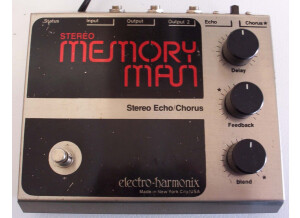
Stereo Memory Man
Delay/Echo/Phrase Sampler for Guitar
-
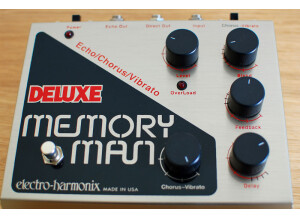
Deluxe Memory Man Mk4
Delay/Echo/Phrase Sampler for Guitar
-
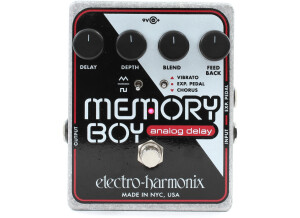
Memory Boy
Delay/Echo/Phrase Sampler for Guitar
$146 new (1 offer) -
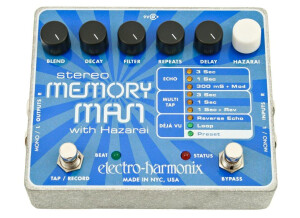
Stereo Memory Man with Hazarai
Delay/Echo/Phrase Sampler for Guitar
-
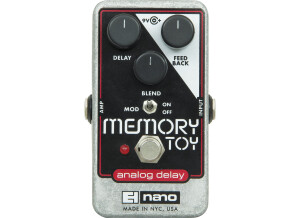
Memory Toy
Delay/Echo/Phrase Sampler for Guitar
$107 new (1 offer) -
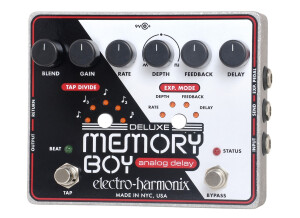
Deluxe Memory Boy
Delay/Echo/Phrase Sampler for Guitar
$201 new (1 offer) -
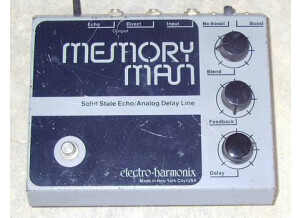
Memory Man Mk1
Delay/Echo/Phrase Sampler for Guitar
-
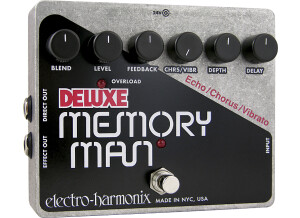
Deluxe Memory Man XO
Delay/Echo/Phrase Sampler for Guitar
$252 new (1 offer) -

Slap-Back Echo
Delay/Echo/Phrase Sampler for Guitar
$92 new (1 offer) -
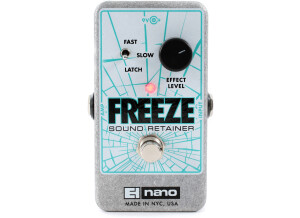
Freeze
Delay/Echo/Phrase Sampler for Guitar
$153 new (1 offer)
Other categories in Delays & reverb pedals
Where to buy Deluxe Memory Man 1100-TT?
Less
There are no classified ads for this product.

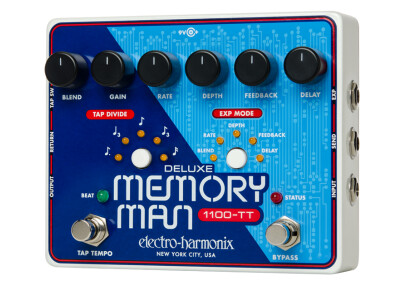








![[NAMM] Deluxe Memory Man Tap Tempo](https://img.audiofanzine.com/img/product/normal/1/1/114354.png?fm=pjpg&w=80&s=a2a579d63175aa322faf808b29801c4a)

